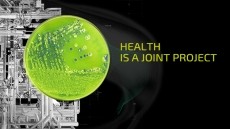EU emissions scheme effectiveness questioned
emissions will come under regulation through the introduction of
the EU Emissions Trading Scheme (EU ETS).
A new briefing paper published by Enviros Consulting sheds light on the effectiveness of the scheme in reducing emissions in Europe and the implications for affected businesses.
It suggests that the EU Emissions Trading Scheme (EU ETS) might not be effective enough to force companies to meet emission targets set out under the 1997 Kyoto Protocol.
The Enviros paper estimates that on the basis of the allowances allocated to existing facilities covered by the EU ETS, European industry will be allowed to increase annual CO2 emissions by five per cent during the first phase of the scheme (2005 to 2007) relative to their emissions in 2000. Additional allowances will also be available through reserves set aside for the construction of new plants.
If all these reserve allowances are issued then emissions would be permitted to increase by an additional six per cent. In total, the first phase of the scheme could therefore allow emissions to increase by up to 11 per cent relative to 2000 levels.
The scheme is designed to ensure that greenhouse gas emissions in the energy and industry sectors are cut at least cost to the economy and help the EU and its Member States meet their emission targets under the 1997 Kyoto Protocol.
But the problem identified by Enviros is that the increases it estimates are in stark contrast to the commitments of European Member States under the Kyoto Protocol. Industrialised nations who signed up to the treaty are legally bound to reduce CO2 emissions by eight per cent below their 1990 levels by the period 2008-2012.
Emissions trading involves the buying and selling of emission allowances between countries or firms that are obliged to mitigate their greenhouse gas emissions at a specified level. The EU ETS scheme facilitates this as a means of tackling emissions of carbon dioxide and other greenhouse gases and combat the serious threat of climate change.
This method has been seen by governments as particularly suited to the emissions of greenhouse gases, which have the same effect wherever they are emitted.
This allows governments to regulate the amount of emissions produced in aggregate by setting the overall cap for the scheme but gives companies the flexibility of determining how and where the emissions reductions will be achieved.
By allowing participants the flexibility to trade allowances the overall emissions, the theory is that reductions are achieved in the most cost-effective way possible.
Enviros says that during Phase II of the scheme, which runs from 2008 to 2010, allocations will have to become much tighter if countries are to attempt to achieve their Kyoto targets. This has the potential to significantly increase allowance prices over this as the demand for credits starts to exceed the supply of low cost credits.
However, even with high allowance prices in Phase II, the consultancy does not predict that this will lead to material reductions in emissions across Europe. For this to happen, policy commitments to reducing CO2 need to be backed up with clear and unchanging legislation that sets out reduction targets for at least 15 years.
This, says the consultancy, will allow a stable forward market to exist and against which investments in low carbon technologies can be financed.















